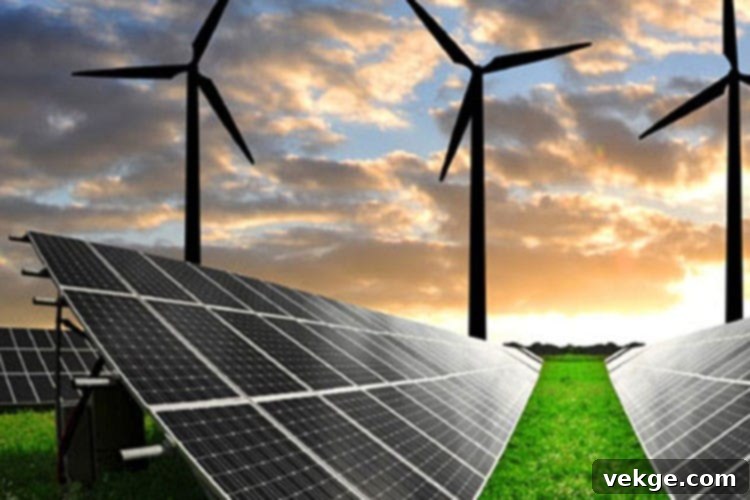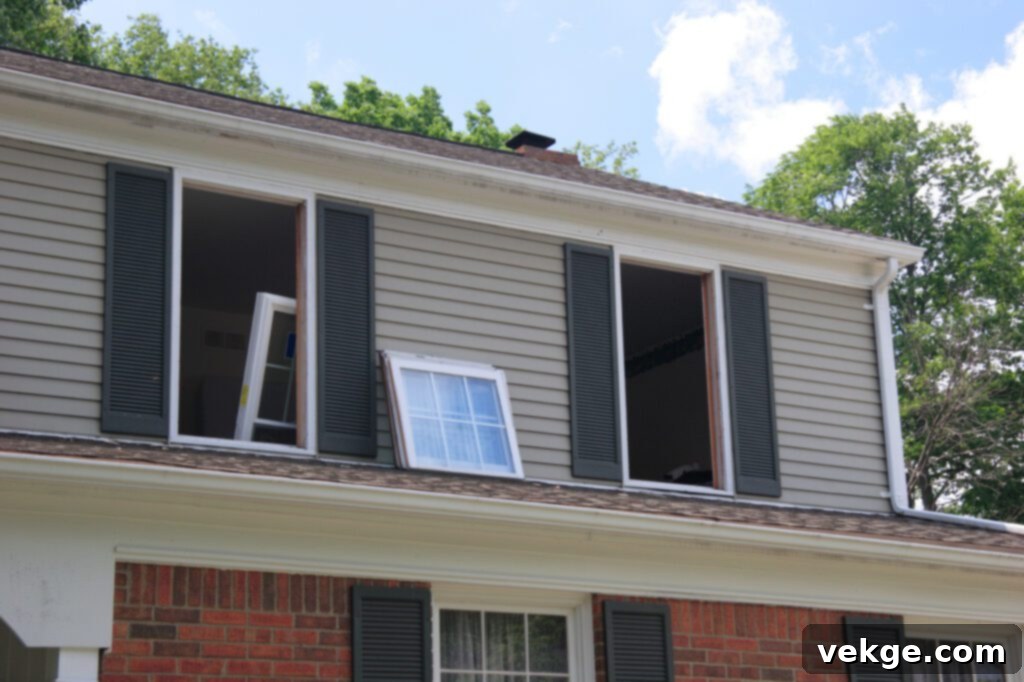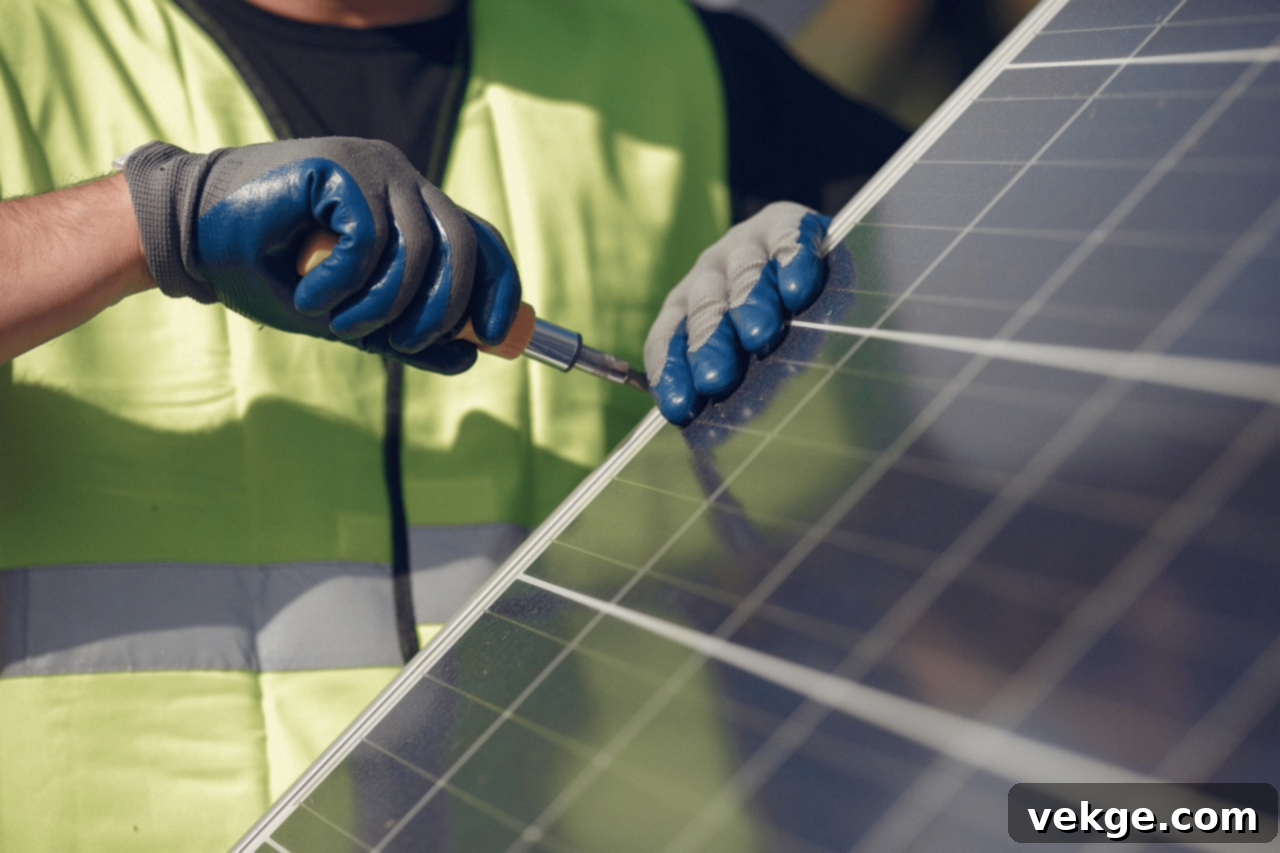Transform Your Home: A Comprehensive Guide to Energy-Efficient Renovations for Lasting Savings
In 2024, the desire to reduce utility bills and shrink your carbon footprint is more pressing than ever. Embarking on home renovations focused on energy efficiency isn’t just a trend; it’s a strategic investment that yields substantial long-term benefits for your wallet and the planet. From cutting-edge insulation materials to smart home climate control, these practical upgrades can turn your energy-saving aspirations into a comfortable, cost-effective reality.
This guide will walk you through key areas where thoughtful renovations can significantly enhance your home’s energy performance, providing detailed insights and actionable tips to help you achieve a more sustainable and economically sound living space.
Optimize Insulation: From Basic Sealing to Advanced Materials

Imagine your home as a perfectly sealed thermos, keeping warmth in during winter and cool air during summer. This ideal state is achieved primarily through effective insulation and meticulous air sealing. Begin by assessing your current insulation, particularly in the attic, walls, and crawl spaces, as these are common areas for significant heat loss or gain.
Basic insulation upgrades often involve sealing gaps and cracks around windows, doors, and utility penetrations with high-quality caulk and weather stripping. This simple step can dramatically reduce drafts and prevent conditioned air from escaping. However, for a truly transformative impact, consider more advanced insulation materials and techniques.
Exploring Advanced Insulation Options:
- Spray Foam Insulation: This highly effective material expands to fill every crevice, creating an airtight seal and providing superior thermal resistance. Available in open-cell and closed-cell varieties, spray foam is excellent for attics, wall cavities, and rim joists, offering high R-values and moisture resistance.
- Cellulose Insulation: Made from recycled paper treated with fire retardants, cellulose is an eco-friendly option that can be blown into attics and wall cavities. It offers good thermal performance and sound dampening qualities, making it a sustainable choice for homeowners.
- Rigid Foam Boards: These panels are ideal for insulating unfinished basements, crawl spaces, and exterior walls. Materials like polyisocyanurate and extruded polystyrene offer high R-values per inch and serve as effective vapor barriers.
- Fiberglass and Mineral Wool Batts: While traditional, modern fiberglass and mineral wool products have improved significantly. They are cost-effective for insulating standard wall cavities, attics, and floors, particularly when installed meticulously to avoid gaps.
Investing in top-notch insulation not only minimizes heat transfer but also contributes to a more consistent indoor temperature, reduces noise pollution, and alleviates the workload on your HVAC system, leading to substantial utility bill reductions. A comprehensive insulation strategy transforms energy efficiency from wishful thinking into everyday reality, ensuring your home remains a comfortable fortress against external temperatures year-round.
Harness Solar Power: More Than Just Panels
When you think of solar power, rooftop panels might be the first image that comes to mind, but modern solar solutions extend far beyond mere electricity generation. Integrating solar technology into your home is a multifaceted approach that can significantly reduce your reliance on the grid and boost your property’s value and eco-credentials.
Comprehensive Solar Integration Strategies:
- Photovoltaic (PV) Panels: These are the most common solar technology, converting sunlight directly into electricity. Modern PV panels are more efficient and aesthetically pleasing than ever, offering options like monocrystalline (highest efficiency), polycrystalline (cost-effective), and thin-film (flexible, for niche applications). They can be grid-tied (connected to the utility grid) or off-grid (completely independent, requiring battery storage).
- Solar Thermal Systems: These systems capture the sun’s energy to heat water or air for your home. Solar water heaters can significantly reduce the energy required to heat domestic hot water, often accounting for a substantial portion of a household’s energy consumption. Types include flat-plate collectors and evacuated-tube collectors, with the latter being more efficient in colder climates.
- Battery Storage Solutions: To maximize your solar investment, consider integrating solar batteries. These systems store excess electricity generated during peak sunlight hours, allowing you to use it at night, during cloudy days, or in power outages. This ensures greater energy independence and maximizes savings by reducing peak-hour electricity purchases from the grid.
- Solar-Powered Appliances and Lighting: Even small-scale additions can make a difference. Solar-powered outdoor lights, chargers, and even ventilation fans can reduce your grid dependency and contribute to overall energy savings. These smaller initiatives are excellent entry points for homeowners new to solar technology.
Beyond the immediate financial savings on your electricity bills, adopting solar power offers environmental benefits by reducing your carbon footprint. Many governments also offer incentives, such as tax credits, rebates, and net metering programs, which can significantly offset the initial installation costs. Solar solutions today are diverse and versatile, transforming every ray of sunlight into potential savings while boosting your home’s eco-credibility and providing a reliable, sustainable energy source.
Integrate Smart Thermostats and HVAC Systems for Smarter Energy Use
Modernizing your home’s heating, ventilation, and air conditioning (HVAC) system is crucial for optimal energy efficiency. The cornerstone of this modernization is the smart thermostat, which provides unparalleled control and intelligence over your indoor climate.
Leveraging Smart Thermostats:
Devices like the Nest Learning Thermostat, Ecobee, and Honeywell Home T9/T10 Pro are designed to adapt to your lifestyle. They learn your preferences, create schedules based on your occupancy patterns, and can be controlled remotely via smartphone apps. Key features often include:
- Learning Capabilities: Automatically adjusts to your preferred temperatures and optimizes settings based on your habits.
- Geofencing: Uses your phone’s location to know when you’re leaving or approaching home, automatically adjusting temperatures to save energy.
- Energy Reports: Provides detailed insights into your energy usage, helping you identify areas for further savings.
- Zoning Control: When paired with a compatible HVAC system, smart thermostats can manage different temperature zones within your home, heating or cooling only the areas in use.
- Voice Assistant Integration: Seamlessly integrates with smart home ecosystems like Amazon Alexa or Google Assistant for hands-free control.
Pairing a smart thermostat with an efficient HVAC system amplifies these benefits. High-efficiency units, such as ENERGY STAR-rated furnaces, air conditioners, and particularly heat pumps, use significantly less energy to condition your home while maintaining superior comfort levels. Heat pumps, for instance, can provide both heating and cooling by transferring heat, making them incredibly efficient, especially in moderate climates. Ductless mini-split systems offer highly localized heating and cooling, ideal for additions or zoned comfort without extensive ductwork.
For added efficiency, consider connecting these devices to a broader home automation system. This allows seamless integration and remote control, making energy management effortless from anywhere. By combining intelligent controls with modern HVAC technology, you maximize energy savings without sacrificing comfort, creating a responsive and efficient climate control system for your home.
However, unless you possess expert knowledge in installing complex systems like HVAC, it’s highly recommended to hire a professional. Projects involving electrical wiring, refrigerant lines, and precise calibration are best handled by certified technicians. (If you happen to be a general contractor yourself, you might find the estimating and invoicing software Joist for general contractors very helpful for managing such projects.)
Upgrade to High-Efficiency Windows and Doors: Keeping Heat Where It Belongs

Windows and doors are often overlooked culprits when it comes to energy loss. Upgrading to high-efficiency models is akin to giving your home a robust protective shield, significantly enhancing its thermal envelope and reducing energy waste.
Key Features of Energy-Efficient Windows:
- Multi-Pane Glazing: Replace old, single-pane windows with double or triple-pane models. The air or inert gas (like argon or krypton) sealed between the panes acts as an insulating barrier, reducing heat transfer.
- Low-Emissivity (Low-E) Coatings: These microscopically thin, transparent metallic coatings reflect infrared light, keeping heat inside during winter and outside during summer. This helps maintain consistent indoor temperatures and protects furnishings from UV fading.
- Insulated Frames: Look for frames made from materials like vinyl, fiberglass, or wood, which offer better insulation properties than aluminum. If aluminum frames are used, ensure they incorporate thermal breaks to prevent heat conduction.
- Performance Ratings: Pay attention to the U-factor (measures heat loss/gain, lower is better) and the Solar Heat Gain Coefficient (SHGC, measures solar radiation allowed in, lower is better for hot climates, higher for cold climates to gain passive solar heat).
Improving Door Efficiency:
Don’t overlook your doors, especially exterior ones. Energy-efficient doors typically feature improved insulation properties and superior sealing mechanisms to prevent drafts.
- Material Choice: Fiberglass and steel doors with polyurethane foam cores offer excellent insulation and durability. Solid wood doors, while aesthetically pleasing, generally offer lower insulating value unless specifically engineered for efficiency.
- Weatherstripping and Sealing: Ensure all doors have robust weatherstripping around their perimeter and a good door sweep at the bottom to prevent air infiltration.
- Proper Installation: Even the best window or door will perform poorly if not installed correctly. Professional installation ensures a tight seal and optimal energy performance.
Enhanced windows and doors are significant investments, but they yield substantial returns through reduced energy loss, lower utility bills, increased indoor comfort, and even improved sound insulation. They are critical components in creating a truly energy-efficient and comfortable home.
Utilize Water Conservation Techniques that Cut Utility Costs
Water conservation is a vital aspect of comprehensive home energy efficiency, as heating and pumping water consume significant amounts of energy. Implementing water-saving techniques not only reduces your water bill but also lowers the energy required for your water heater and pump, offering a dual benefit to your budget and the environment.
Effective Water Conservation Strategies:
- Low-Flow Fixtures: Start by installing low-flow faucets, showerheads, and aerators. Modern designs deliver ample pressure and coverage while drastically reducing water usage. An ENERGY STAR certified showerhead, for example, can save thousands of gallons of water per year.
- Dual-Flush Toilets: Replace older, inefficient toilets with dual-flush models. These offer options for different flush volumes based on waste type, saving significant amounts of water over time. Even better, consider high-efficiency or ultra-low-flush toilets that use as little as 0.8 gallons per flush.
- Energy-Efficient Appliances: When upgrading, choose ENERGY STAR certified dishwashers and washing machines. These appliances are designed to use less water and energy without compromising performance.
- Greywater Systems: Explore the possibility of a greywater recycling system. This technology reuses water from sinks, showers, and washing machines (non-toilet waste) for non-potable purposes like landscape irrigation or toilet flushing. This can dramatically reduce your fresh water consumption.
- Smart Irrigation Controllers: For outdoor watering, install smart irrigation controllers that adjust watering schedules based on local weather conditions, soil moisture levels, and plant type. This prevents overwatering and ensures water is used precisely when and where it’s needed, saving significant amounts of water compared to traditional timers.
- Rainwater Harvesting: Install rain barrels or cisterns to collect rainwater from your roof for use in gardens, washing cars, or other outdoor tasks. This reduces reliance on municipal water sources and saves money.
- Drought-Resistant Landscaping (Xeriscaping): Choose native, drought-tolerant plants for your garden. These plants require less watering once established, further reducing your outdoor water consumption.
Even small steps, such as promptly fixing leaky faucets and toilets, taking shorter showers, and turning off the tap while brushing your teeth, can add up to noticeable savings on your utility bills. Efficient water use benefits both the environment by conserving a precious resource and your wallet by cutting down on water and energy costs.
The Bottom Line: Building a Sustainable, Cost-Effective Home
Renovating your home for maximum energy efficiency might seem like a daunting task, but approaching it strategically, one upgrade at a time, makes it achievable and incredibly rewarding. Each improvement you implement brings you closer to a more sustainable, comfortable, and cost-effective living space. The journey toward an energy-efficient home is an investment that pays dividends through lower utility bills, increased property value, and a reduced environmental footprint.
Here’s a quick recap of the key areas to focus on for a truly energy-efficient renovation:
- Optimizing Insulation: Enhance your home’s thermal envelope by upgrading wall, attic, and floor insulation with advanced materials like spray foam or cellulose, and meticulously seal all air leaks.
- Harnessing Solar Power: Go beyond traditional PV panels by integrating solar thermal systems for water heating and battery storage for energy independence, maximizing your solar investment.
- Integrating Smart Thermostats and HVAC Systems: Pair intelligent learning thermostats with high-efficiency HVAC units (including heat pumps and zoned systems) for optimal climate management and significant energy savings.
- Upgrading to High-Efficiency Windows and Doors: Replace old, leaky windows and doors with double or triple-pane, Low-E coated models featuring insulated frames and robust seals for superior temperature control.
- Utilizing Water Conservation Techniques: Employ low-flow fixtures, dual-flush toilets, greywater recycling systems, smart irrigation, and rainwater harvesting to drastically reduce water and associated energy consumption.
By implementing these comprehensive strategies, you can transform your home into an energy-efficient haven that’s not only kind to the planet but also incredibly kind to your budget. Start your journey today and experience the comfort and savings that come with a truly optimized home.
